-
22 results in Exploration of MedicineSort byRelevance
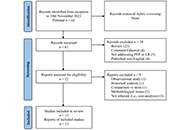 Intravenous lactated Ringer’s solution alone and in combination with NSAIDs in prevention of post-ERCP acute pancreatitis: an updated systematic reviewOpen AccessSystematic ReviewBackground: Post-endoscopic retrograde cholangiopancreatography acute pancreatitis (PEP) is the most common complication of endoscopic retrograde cholangiopancreatography (ERCP). Studies have sho [...] Read more.Vincenzo Giorgio Mirante ... Romano SassatelliPublished: October 21, 2024 Explor Med. 2024;5:656–673
Intravenous lactated Ringer’s solution alone and in combination with NSAIDs in prevention of post-ERCP acute pancreatitis: an updated systematic reviewOpen AccessSystematic ReviewBackground: Post-endoscopic retrograde cholangiopancreatography acute pancreatitis (PEP) is the most common complication of endoscopic retrograde cholangiopancreatography (ERCP). Studies have sho [...] Read more.Vincenzo Giorgio Mirante ... Romano SassatelliPublished: October 21, 2024 Explor Med. 2024;5:656–673
DOI: https://doi.org/10.37349/emed.2024.00247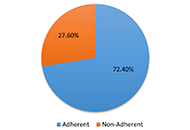 Analysis of medication adherence of chronic hypertensive patients in Pakistani community via open survey methodOpen AccessOriginal ArticleAim: Hypertension, a prevalent chronic condition, significantly contributes to cardiovascular diseases worldwide. Effective management of hypertension is highly dependent on patient adherence to [...] Read more.Sameen Abbas ... Sohail KamranPublished: October 23, 2024 Explor Med. 2024;5:674–683
Analysis of medication adherence of chronic hypertensive patients in Pakistani community via open survey methodOpen AccessOriginal ArticleAim: Hypertension, a prevalent chronic condition, significantly contributes to cardiovascular diseases worldwide. Effective management of hypertension is highly dependent on patient adherence to [...] Read more.Sameen Abbas ... Sohail KamranPublished: October 23, 2024 Explor Med. 2024;5:674–683
DOI: https://doi.org/10.37349/emed.2024.00248
This article belongs to the special issue Drug Adherence in Hypertension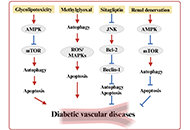 Redefining the role of autophagy in diabetic vascular diseasesOpen AccessMini ReviewDiabetic vascular disease, as one of the common complications in diabetic patients, threatens the quality of life and health of patients. Autophagy maintains cellular homeostasis and survival as an important intracellular self-rep [...] Read more.Ying An, Jun RenPublished: October 25, 2024 Explor Med. 2024;5:684–693
Redefining the role of autophagy in diabetic vascular diseasesOpen AccessMini ReviewDiabetic vascular disease, as one of the common complications in diabetic patients, threatens the quality of life and health of patients. Autophagy maintains cellular homeostasis and survival as an important intracellular self-rep [...] Read more.Ying An, Jun RenPublished: October 25, 2024 Explor Med. 2024;5:684–693
DOI: https://doi.org/10.37349/emed.2024.00249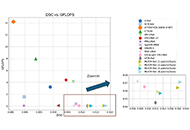 MUCM-Net: a Mamba powered UCM-Net for skin lesion segmentationOpen AccessOriginal ArticleAim: Skin lesion segmentation is critical for early skin cancer detection. Challenges in automatic segmentation from dermoscopic images include variations in color, texture, and artifacts of indi [...] Read more.Chunyu Yuan ... Sos S. AgaianPublished: October 25, 2024 Explor Med. 2024;5:694–708
MUCM-Net: a Mamba powered UCM-Net for skin lesion segmentationOpen AccessOriginal ArticleAim: Skin lesion segmentation is critical for early skin cancer detection. Challenges in automatic segmentation from dermoscopic images include variations in color, texture, and artifacts of indi [...] Read more.Chunyu Yuan ... Sos S. AgaianPublished: October 25, 2024 Explor Med. 2024;5:694–708
DOI: https://doi.org/10.37349/emed.2024.00250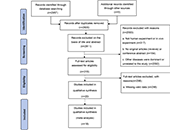 Gut microbiota dysbiosis in rheumatoid arthritis: a systematic review and meta-analysisOpen AccessMeta-AnalysisBackground: Rheumatoid arthritis (RA) is an autoimmune joint disease with systemic manifestations. Emerging evidence implicates the gut microbiota in the pathophysiology of RA. However, the speci [...] Read more.Qin-Yi Su ... Sheng-Xiao ZhangPublished: October 25, 2024 Explor Med. 2024;5:709–719
Gut microbiota dysbiosis in rheumatoid arthritis: a systematic review and meta-analysisOpen AccessMeta-AnalysisBackground: Rheumatoid arthritis (RA) is an autoimmune joint disease with systemic manifestations. Emerging evidence implicates the gut microbiota in the pathophysiology of RA. However, the speci [...] Read more.Qin-Yi Su ... Sheng-Xiao ZhangPublished: October 25, 2024 Explor Med. 2024;5:709–719
DOI: https://doi.org/10.37349/emed.2024.00251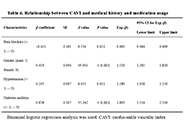 Descriptive study of possible relation between cardio-ankle vascular index and lipids in hypertension subjectsOpen AccessOriginal ArticleAim: The cardio-ankle vascular index (CAVI) is a new evaluation indicator for arteriosclerosis. This study investigated the relationship between the CAVI and lipid levels in patients with hyperte [...] Read more.Jinbo Liu ... Hongyu WangPublished: October 31, 2024 Explor Med. 2024;5:720–731
Descriptive study of possible relation between cardio-ankle vascular index and lipids in hypertension subjectsOpen AccessOriginal ArticleAim: The cardio-ankle vascular index (CAVI) is a new evaluation indicator for arteriosclerosis. This study investigated the relationship between the CAVI and lipid levels in patients with hyperte [...] Read more.Jinbo Liu ... Hongyu WangPublished: October 31, 2024 Explor Med. 2024;5:720–731
DOI: https://doi.org/10.37349/emed.2024.00252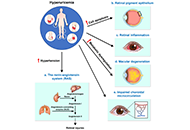 Hyperuricemia and epiretinal pathologies: a review of pathophysiological links and clinical implicationsOpen AccessReviewHyperuricemia (HUA), defined by elevated serum uric acid levels, is well-established in its association with systemic conditions like gout and cardiovascular diseases. Recently, however, emerging re [...] Read more.Chun-Yao Cheng ... Tzu-Hurng ChengPublished: October 31, 2024 Explor Med. 2024;5:732–749
Hyperuricemia and epiretinal pathologies: a review of pathophysiological links and clinical implicationsOpen AccessReviewHyperuricemia (HUA), defined by elevated serum uric acid levels, is well-established in its association with systemic conditions like gout and cardiovascular diseases. Recently, however, emerging re [...] Read more.Chun-Yao Cheng ... Tzu-Hurng ChengPublished: October 31, 2024 Explor Med. 2024;5:732–749
DOI: https://doi.org/10.37349/emed.2024.00253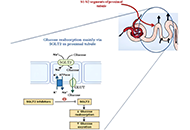 Navigating the therapeutic landscape of SGLT2 inhibitors in diabetes management: exploring efficacy and emerging concernsOpen AccessReviewSodium-glucose cotransporter 2 (SGLT2) inhibitors are integral to diabetes treatment, facilitating renal glucose excretion and offering benefits in cardiovascular risk reduction, kidney function pre [...] Read more.Farazul Hoda ... Abul Kalam NajmiPublished: November 06, 2024 Explor Med. 2024;5:774–796
Navigating the therapeutic landscape of SGLT2 inhibitors in diabetes management: exploring efficacy and emerging concernsOpen AccessReviewSodium-glucose cotransporter 2 (SGLT2) inhibitors are integral to diabetes treatment, facilitating renal glucose excretion and offering benefits in cardiovascular risk reduction, kidney function pre [...] Read more.Farazul Hoda ... Abul Kalam NajmiPublished: November 06, 2024 Explor Med. 2024;5:774–796
DOI: https://doi.org/10.37349/emed.2024.00255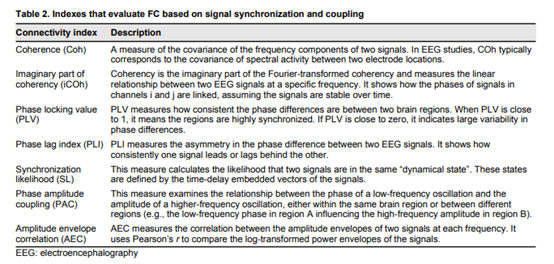 Functional connectivity and cognitive decline: a review of rs-fMRI, EEG, MEG, and graph theory approaches in aging and dementiaOpen AccessReviewAge-related changes in the brain cause cognitive decline and dementia. In recent year’s researchers’ extensively studied the relationship between age related changes in functional connectivity ( [...] Read more.P.V.N.N. Ranasinghe, Mapa S. T. MapaPublished: November 08, 2024 Explor Med. 2024;5:797–821
Functional connectivity and cognitive decline: a review of rs-fMRI, EEG, MEG, and graph theory approaches in aging and dementiaOpen AccessReviewAge-related changes in the brain cause cognitive decline and dementia. In recent year’s researchers’ extensively studied the relationship between age related changes in functional connectivity ( [...] Read more.P.V.N.N. Ranasinghe, Mapa S. T. MapaPublished: November 08, 2024 Explor Med. 2024;5:797–821
DOI: https://doi.org/10.37349/emed.2024.00256
This article belongs to the special issue Neurophysiological Mechanisms of Aging and Dementia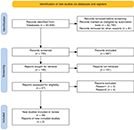 Regenerative capacity of dental mesenchymal stem cells: a systematic reviewOpen AccessSystematic ReviewBackground: Oral mesenchymal cells already have wide clinical applications based on their tissue regenerative abilities. The purpose of this study is to present the picture of scientific research [...] Read more.Ilma Robo ... Vera OstreniPublished: November 12, 2024 Explor Med. 2024;5:822–832
Regenerative capacity of dental mesenchymal stem cells: a systematic reviewOpen AccessSystematic ReviewBackground: Oral mesenchymal cells already have wide clinical applications based on their tissue regenerative abilities. The purpose of this study is to present the picture of scientific research [...] Read more.Ilma Robo ... Vera OstreniPublished: November 12, 2024 Explor Med. 2024;5:822–832
DOI: https://doi.org/10.37349/emed.2024.00257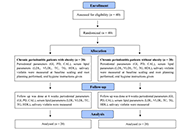 Effect of nonsurgical periodontal therapy on salivary visfatin and serum lipid levels in obese patients with chronic periodontitisOpen AccessOriginal ArticleAim: Periodontal diseases are prevalent and can be exacerbated by conditions such as obesity. Understanding the impact of obesity on periodontal health is crucial for developing effective managem [...] Read more.Aiswarya Polumatla ... Tejaswin PolepallePublished: November 14, 2024 Explor Med. 2024;5:833–842
Effect of nonsurgical periodontal therapy on salivary visfatin and serum lipid levels in obese patients with chronic periodontitisOpen AccessOriginal ArticleAim: Periodontal diseases are prevalent and can be exacerbated by conditions such as obesity. Understanding the impact of obesity on periodontal health is crucial for developing effective managem [...] Read more.Aiswarya Polumatla ... Tejaswin PolepallePublished: November 14, 2024 Explor Med. 2024;5:833–842
DOI: https://doi.org/10.37349/emed.2024.00258
This article belongs to the special issue Oral Health Interconnections and Multidisciplinary Approaches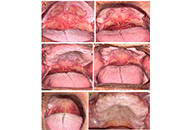 Managing severe oral mucositis using a novel combination of photobiomodulation therapy and pilocarpine hydrochloride: a case reportOpen AccessCase ReportCombined treatment of photobiomodulation therapy and pilocarpine hydrochloride (Salagen) helped a patient suffering from severe oral mucositis and malnutrition resulting from radiochemotherapy for h [...] Read more.Aya Dawoud Agha ... Moudar BakkourPublished: November 14, 2024 Explor Med. 2024;5:843–851
Managing severe oral mucositis using a novel combination of photobiomodulation therapy and pilocarpine hydrochloride: a case reportOpen AccessCase ReportCombined treatment of photobiomodulation therapy and pilocarpine hydrochloride (Salagen) helped a patient suffering from severe oral mucositis and malnutrition resulting from radiochemotherapy for h [...] Read more.Aya Dawoud Agha ... Moudar BakkourPublished: November 14, 2024 Explor Med. 2024;5:843–851
DOI: https://doi.org/10.37349/emed.2024.00259
This article belongs to the special issue Oral Health Interconnections and Multidisciplinary Approaches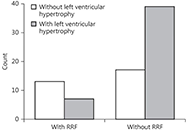 Hypertension management and treatment adherence in patients on permanent hemodialysis therapyOpen AccessMini ReviewHypertension (HTN) is connected to many complications such as stroke, heart attack, heart failure, and kidney damage. Aging, lifestyle modifications, and obesity are risk factors associated with art [...] Read more.Vaia Raikou, Sotiris GavriilPublished: November 19, 2024 Explor Med. 2024;5:870–879
Hypertension management and treatment adherence in patients on permanent hemodialysis therapyOpen AccessMini ReviewHypertension (HTN) is connected to many complications such as stroke, heart attack, heart failure, and kidney damage. Aging, lifestyle modifications, and obesity are risk factors associated with art [...] Read more.Vaia Raikou, Sotiris GavriilPublished: November 19, 2024 Explor Med. 2024;5:870–879
DOI: https://doi.org/10.37349/emed.2024.00261
This article belongs to the special issue Drug Adherence in Hypertension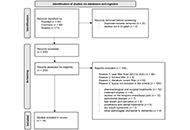 Oral health conditions and hygiene procedures in patients with Parkinson’s disease: a systematic reviewOpen AccessSystematic ReviewBackground: Parkinson’s, a degenerative disease characterized by motor and non-motor symptoms, gradually leads to disability and affects ordinary gestures, including patients’ home oral hygie [...] Read more.Alessia Pardo ... Massimo AlbanesePublished: November 19, 2024 Explor Med. 2024;5:852–869
Oral health conditions and hygiene procedures in patients with Parkinson’s disease: a systematic reviewOpen AccessSystematic ReviewBackground: Parkinson’s, a degenerative disease characterized by motor and non-motor symptoms, gradually leads to disability and affects ordinary gestures, including patients’ home oral hygie [...] Read more.Alessia Pardo ... Massimo AlbanesePublished: November 19, 2024 Explor Med. 2024;5:852–869
DOI: https://doi.org/10.37349/emed.2024.00260
This article belongs to the special issue Oral Health Interconnections and Multidisciplinary Approaches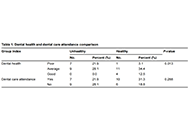 Salivary hydroxyproline levels and gingivitis in 6–7 years children: a case-control studyOpen AccessOriginal ArticleAim: Gingivitis is the most prevalent periodontal infection in children and adolescents. Various salivary markers have become potentially important in the early diagnosis of oral diseases, and so [...] Read more.Marzieh Mohammadi Moghadam ... Freshteh OsmaniPublished: November 21, 2024 Explor Med. 2024;5:880–886
Salivary hydroxyproline levels and gingivitis in 6–7 years children: a case-control studyOpen AccessOriginal ArticleAim: Gingivitis is the most prevalent periodontal infection in children and adolescents. Various salivary markers have become potentially important in the early diagnosis of oral diseases, and so [...] Read more.Marzieh Mohammadi Moghadam ... Freshteh OsmaniPublished: November 21, 2024 Explor Med. 2024;5:880–886
DOI: https://doi.org/10.37349/emed.2024.00262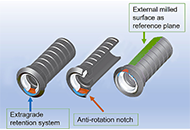 Benefits of a snap-joint system in an immediate full-arch maxillary fixed rehabilitation on disparallel implantsOpen AccessCase ReportImmediate implant-supported rehabilitation of atrophic maxillae with a fixed screw-retained prosthesis has to deal with the fixtures’ disparallelism and a high risk of fracture of the fixture-abut [...] Read more.Gerardo Pellegrino ... Giuseppe LizioPublished: November 21, 2024 Explor Med. 2024;5:887–895
Benefits of a snap-joint system in an immediate full-arch maxillary fixed rehabilitation on disparallel implantsOpen AccessCase ReportImmediate implant-supported rehabilitation of atrophic maxillae with a fixed screw-retained prosthesis has to deal with the fixtures’ disparallelism and a high risk of fracture of the fixture-abut [...] Read more.Gerardo Pellegrino ... Giuseppe LizioPublished: November 21, 2024 Explor Med. 2024;5:887–895
DOI: https://doi.org/10.37349/emed.2024.00263
This article belongs to the special issue Oral Health Interconnections and Multidisciplinary Approaches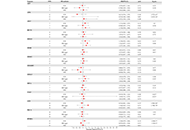 The casual association between mTOR-related proteins and rheumatoid arthritis: Mendelian randomization in European populationsOpen AccessOriginal ArticleAim: Rheumatoid arthritis (RA) is an autoimmune disorder marked by an overgrowth of joint tissue and inflammation of the synovium. The mammalian target of rapamycin (mTOR), functioning as a serin [...] Read more.Zhoujun Yuan ... Shengxiao ZhangPublished: November 25, 2024 Explor Med. 2024;5:896–911
The casual association between mTOR-related proteins and rheumatoid arthritis: Mendelian randomization in European populationsOpen AccessOriginal ArticleAim: Rheumatoid arthritis (RA) is an autoimmune disorder marked by an overgrowth of joint tissue and inflammation of the synovium. The mammalian target of rapamycin (mTOR), functioning as a serin [...] Read more.Zhoujun Yuan ... Shengxiao ZhangPublished: November 25, 2024 Explor Med. 2024;5:896–911
DOI: https://doi.org/10.37349/emed.2024.00264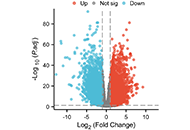 Prognostic and diagnostic value of SPINK mRNAs expression in head and neck squamous cell carcinoma based on genome-wide analysisOpen AccessOriginal ArticleAim: Head and neck squamous cell carcinoma (HNSC) is a major contributor to the global cancer burden. The serine protease inhibitor Kazal-type (SPINK) gene family has been linked to various cance [...] Read more.Chao Ma, Haoyu LiPublished: December 02, 2024 Explor Med. 2024;5:912–925
Prognostic and diagnostic value of SPINK mRNAs expression in head and neck squamous cell carcinoma based on genome-wide analysisOpen AccessOriginal ArticleAim: Head and neck squamous cell carcinoma (HNSC) is a major contributor to the global cancer burden. The serine protease inhibitor Kazal-type (SPINK) gene family has been linked to various cance [...] Read more.Chao Ma, Haoyu LiPublished: December 02, 2024 Explor Med. 2024;5:912–925
DOI: https://doi.org/10.37349/emed.2024.00265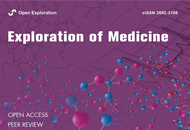 Zelsuvmi: a promising treatment for molluscum contagiosumOpen AccessMini ReviewMolluscum contagiosum (MC) is a common skin infection caused by a poxvirus, primarily affecting children and immunocompromised adults. It manifests as single or multiple raised, pearl-like papules a [...] Read more.Fatima Laique ... Bibek GiriPublished: December 03, 2024 Explor Med. 2024;5:926–935
Zelsuvmi: a promising treatment for molluscum contagiosumOpen AccessMini ReviewMolluscum contagiosum (MC) is a common skin infection caused by a poxvirus, primarily affecting children and immunocompromised adults. It manifests as single or multiple raised, pearl-like papules a [...] Read more.Fatima Laique ... Bibek GiriPublished: December 03, 2024 Explor Med. 2024;5:926–935
DOI: https://doi.org/10.37349/emed.2024.00266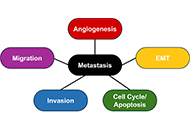 Role of transcription factors in metastasis of breast cancerOpen AccessReviewMetastasis causes a majority of deaths in breast cancer patients. Metastasis is the spread of cancer to distant sites in the body away from the primary tumor, creating secondary tumors, or metastase [...] Read more.Spoorthi Marada ... Yi LuPublished: December 09, 2024 Explor Med. 2024;5:936–949
Role of transcription factors in metastasis of breast cancerOpen AccessReviewMetastasis causes a majority of deaths in breast cancer patients. Metastasis is the spread of cancer to distant sites in the body away from the primary tumor, creating secondary tumors, or metastase [...] Read more.Spoorthi Marada ... Yi LuPublished: December 09, 2024 Explor Med. 2024;5:936–949
DOI: https://doi.org/10.37349/emed.2024.00267
This article belongs to the special issue Breast Cancer: Basic and Clinical Advances -